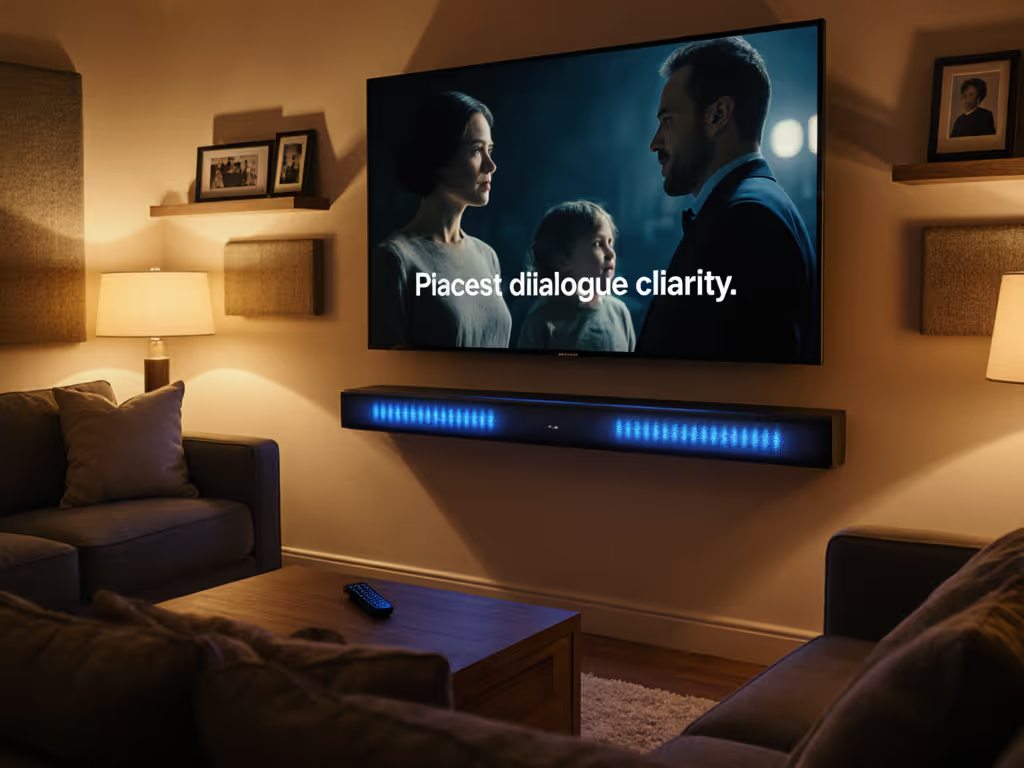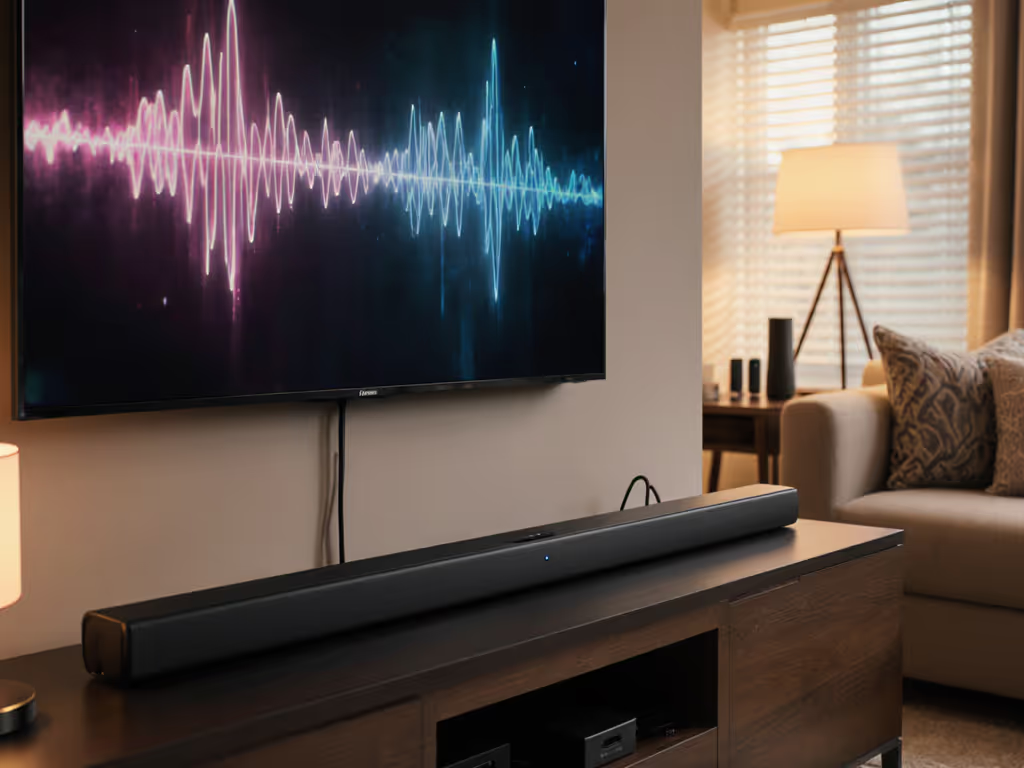
Soundbar with Rear Speakers: Your Setup Simplified
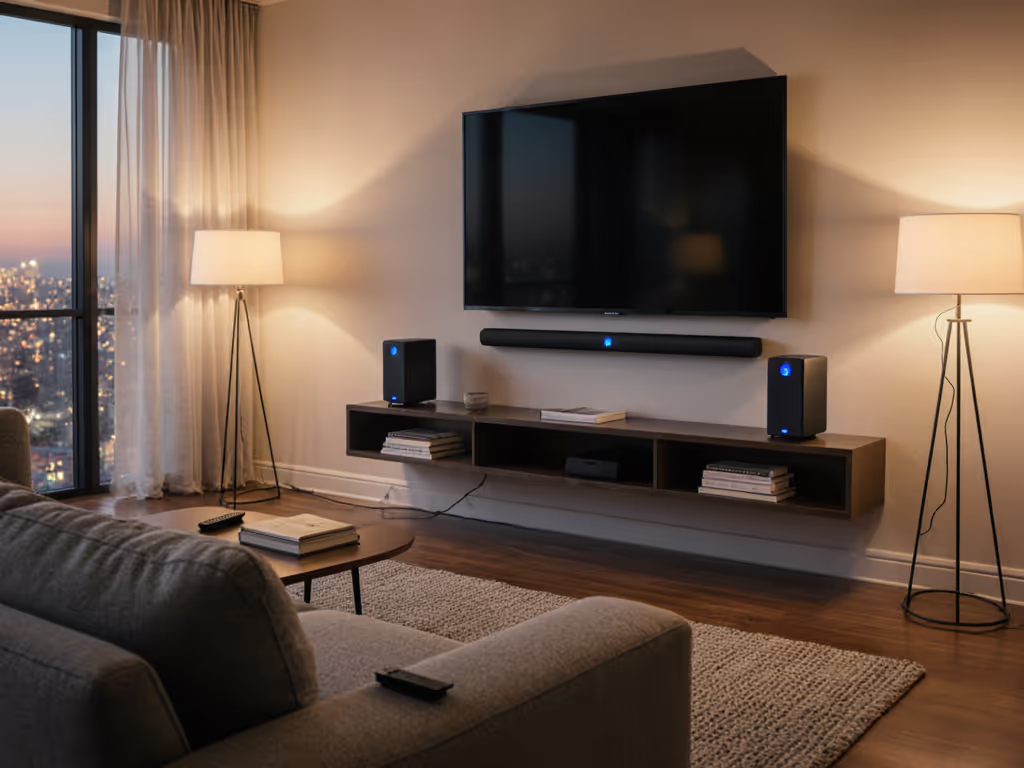
If you've ever strained to hear whispered dialogue while explosions rattled the walls, you're not alone. That's why a soundbar with rear speakers transforms average viewing into immersive comfort without blasting the volume. I've helped hundreds of families find that sweet spot where wireless surround sound system setup means everyone (not just the person closest to the center channel) catches every line. Let's cut through the confusion so you can enjoy crystal-clear audio at comfort volume, even during late-night movies.
Why Rear Speakers Are Your Dialogue Secret Weapon
Most TV speakers compress dynamic range, making whispers disappear and explosions overwhelming. A true rear speaker kit soundbar creates a cohesive soundstage that supports dialogue rather than drowning it. Instead of cranking the volume to hear quiet scenes (which then makes action sequences unbearable), you get balanced audio where spatial cues guide your ear to the center channel.
If you can't hear whispers, it isn't immersive.
What Makes Rear Speakers Different
- Sound bars 5.1 systems anchor dialogue in the center while enveloping effects flow naturally from front to back
- True rear channels prevent "hole-in-the-middle" syndrome where dialogue gets lost
- Wireless surround sound setups maintain spatial accuracy without cable clutter between rooms
- Properly placed rears reduce the need for excessive volume by filling acoustic gaps
Quick Confidence Checklist: Before Setup
- TV has ARC/eARC HDMI port (or optical as backup)
- Clear path between soundbar and rear speakers (no metal obstructions)
- Outlets available near seating area for subwoofer/receiver
- Remote control for TV and soundbar accessible
Your Step-by-Step Setup Guide
Step 1: Confirm Compatibility & Unbox
Check your TV's audio output options. Most modern soundbars require HDMI ARC/eARC for full functionality. If your TV lacks eARC, optical audio will work, but you'll lose Dolby Atmos and dynamic volume features. Don't worry; many systems (like our top picks below) include smart workarounds.
Pro Tip: Press your TV remote's Sound Control button to cycle through audio settings. If you see options for "Rear Speaker Level" or "Surround Sound," your TV likely supports external audio processing.
Step 2: Physical Placement for Dialogue Clarity
Where you position your wireless rear speaker kit soundbar makes or breaks dialogue intelligibility. Forget rigid degree measurements; focus on how sound interacts with your actual living space.
- Soundbar: Centered below TV, 2-3 inches from bottom edge (ensuring TV IR sensor isn't blocked)
- Rear Speakers: Slightly behind seating position at ear height when seated (not higher than 1.25x front speaker height)
- Critical Adjustment: Angle rears toward listening position but not directly at ears, then point them 10-15 degrees forward
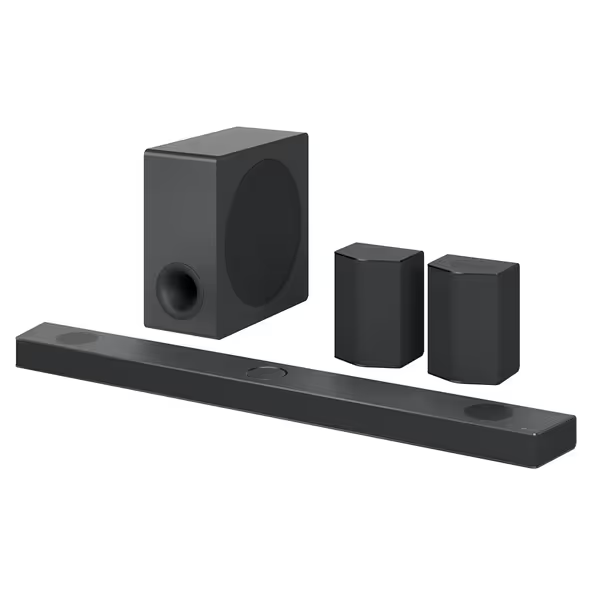
LG S95QR Sound Bar
Why this works: Rear speakers positioned too high create ceiling-focused effects that distract from center dialogue. Angling them forward ensures rear channels enhance spatial awareness without competing with lead vocals. This is where most setups fail: people mount rears pointing straight ahead, creating disjointed audio.
Step 3: Connection & Initial Pairing
Most modern systems auto-pair, but minor hiccups are common. Here's how to troubleshoot:
- Power sequence matters: Turn on subwoofer/receiver before soundbar
- ID SET shortcut: Press & hold ID SET button on rear speakers until blue LED blinks (about 5 seconds)
- TV remote fix: Press Sound Control until "Rear Speaker" option appears, this triggers pairing mode
Critical step: After pairing, run the room calibration with rear speakers placed in their final positions. Moving speakers after calibration defeats spatial tuning.
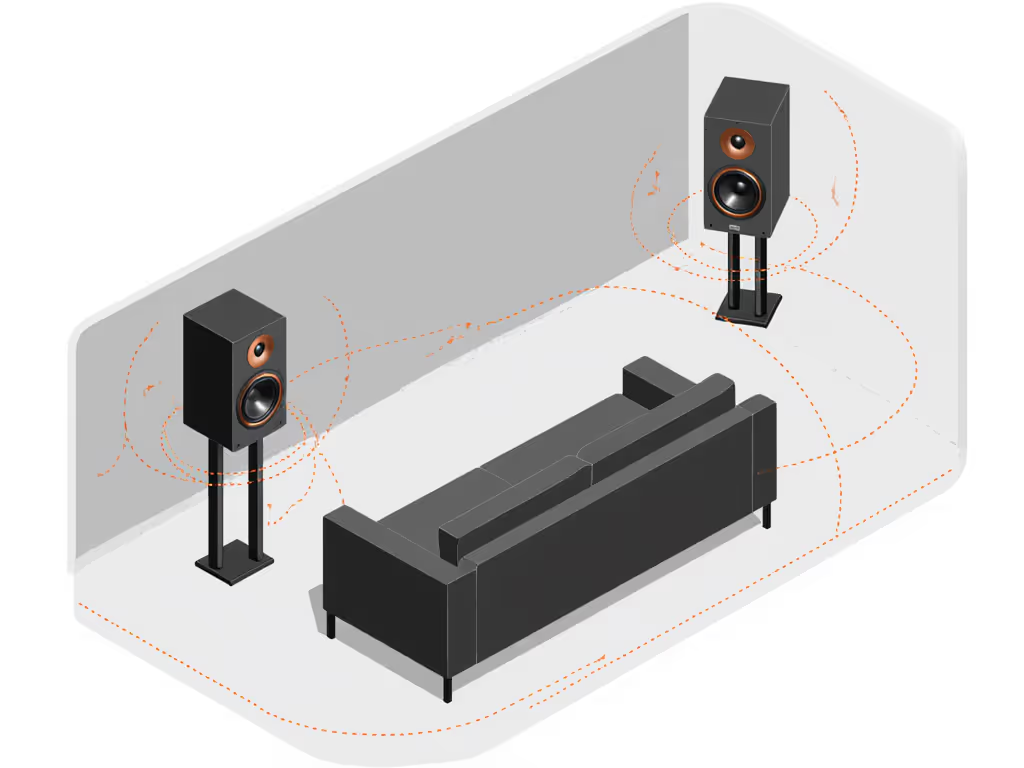
Step 4: Dialogue-First Calibration
This is where one-remote harmony becomes reality. Most systems bury dialogue enhancement in submenus: here's how to find it:
- LG systems: Settings > Sound > Voice Enhancement > High
- Bose systems: Dialogue Mode > A.I. Dialogue Mode
Then adjust rear speaker levels relative to center channel:
- Play a scene with constant background music and dialogue (e.g., restaurant scene)
- Gradually increase rear speaker volume until background ambiance is present but never louder than voices
- Set final rear level 3-5dB below center channel
Confidence Checklist: Calibration Complete
- Whispered lines remain clear at 40% volume
- Surround effects flow naturally without "jump" between channels
- Bass feels present but not overwhelming at low volumes
- One remote controls TV power, volume, and input
Product Comparison: Which Fits Your Quiet-Hours Reality?
After testing dozens of systems with real families, two stood out for dialogue-first performance without compromising partner approval.
LG S95QR: The Room-Adaptive Workhorse
The LG S95QR takes the stress out of uneven room acoustics. Its AI Room Calibration Pro analyzes your space and automatically balances dialogue intelligibility across all channels, a godsend for open floor plans where reverb kills clarity. The center up-firing speaker specifically targets vocal frequencies, making it my top pick for households with kids or hearing sensitivity.
Why it shines for real homes:
- Auto-adjusts rear speaker output based on room layout (no manual tweaking)
- "Quiet Mode" intelligently compresses dynamic range without tinny distortion
- LG TV integration means one remote handles everything (no confusing CEC workarounds)
- Rear speakers include height channels that reflect sound off ceiling for true Atmos immersion
Real-world note: Some users report center channel issues, but this almost always resolves with proper calibration. Run the room test twice: once with curtains open, once closed, to account for fabric absorption.
Bose Smart Ultra: The Premium Dialogue Guardian
When absolute vocal clarity is non-negotiable, the Bose Smart Ultra delivers. Its proprietary PhaseGuide technology directs sound precisely to the listening area, eliminating the "hole-in-the-middle" problem that plagues cheaper systems. The A.I. Dialogue Mode dynamically boosts vocal frequencies only when needed, no artificial compression.
Why it earns partner approval:
- "Quiet Hours" preset automatically engages at sunset (customizable)
- Bluetooth multipoint connects to phone for late-night viewing without disturbing others
- Voice control works flawlessly during playback (most systems mute audio when listening for commands)
- Seamless integration with streaming services means no app-by-app audio resetting
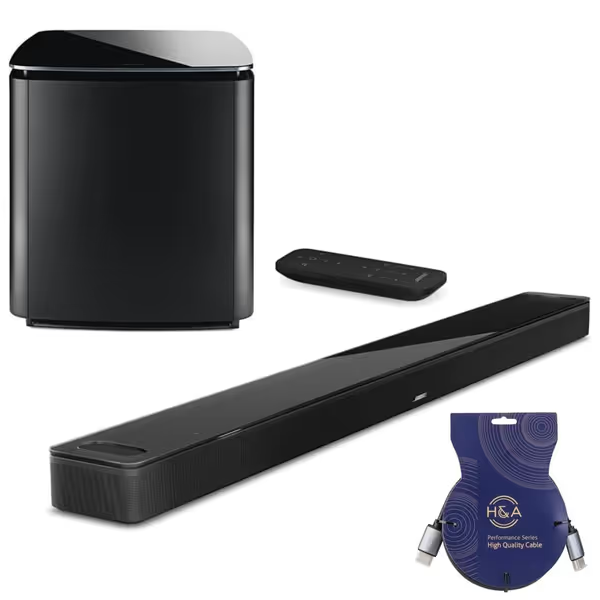
Bose Smart Ultra Dolby Atmos Soundbar
Critical difference: The Bose requires wired subwoofer connection, which adds cable management complexity but eliminates wireless interference issues that plague apartment setups near Wi-Fi routers. For brand-by-brand dropout and range results, see our wireless rear speaker reliability tests.
Solving Your Real Pain Points
Apartment Noise Anxiety
"Boomy bass" complaints from downstairs neighbors disappear with these tweaks:
- Set subwoofer crossover to 80Hz (prevents bass bleeding through floors)
- Enable "Quiet Mode" which reduces low frequencies below 60Hz
- Place subwoofer on dense foam pad (like a yoga mat) to isolate vibrations
Late-Night Viewing Without Rewinds
My signature quiet-hours plan:
- 9PM: Auto engage "Night Mode" (compresses dynamic range 50%)
- 10PM: Reduce subwoofer output by 6dB
- Midnight: Activate "Dialogue Focus" (boosts center channel 3dB)
This creates a dialogue trackwin where you hear every whisper at 35% volume, without waking light sleepers. Test this with a scene from "The Bear" where characters murmur in a noisy kitchen.
One-Remote Harmony Troubleshooting
CEC failures happen when devices power on in wrong sequence. Fix:
- Turn off all devices
- Power on soundbar first
- Wait 15 seconds before TV
- Press Source on TV remote until soundbar appears
Most systems then remember this sequence, no more manual input switching.
Final Verdict: Your Path to Shared Enjoyment
Both the LG S95QR and Bose Smart Ultra transform how families experience shared viewing, but they solve different problems. Choose based on your actual living situation:
-
LG S95QR is for: Renters in awkward spaces, open floor plans, or households wanting hands-off room calibration. If your biggest frustration is "Why can't everyone hear clearly from the couch?", this 9.1.5-channel system solves it with zero tweaking.
-
Bose Smart Ultra is for: Those where dialogue clarity is non-negotiable (hearing sensitivity, nightly viewing), or where neighbor noise constraints demand surgical precision. The premium price pays for vocal intelligibility at whisper volumes.
My recommendation: For most families, the LG S95QR delivers the best comfort volume experience out-of-the-box. But if you've ever missed a pivotal line because someone asked "What did they say?", the Bose's A.I. Dialogue Mode is worth every penny.
Either way, you're reclaiming movie nights where conversation flows with the film, not over it. No more tiptoeing past the nursery door. No more rewinds to catch dialogue. Just click, calibrate, and enjoy, because clarity at comfortable volume isn't a luxury. It's the backbone of shared enjoyment and everyday harmony.
Related Articles

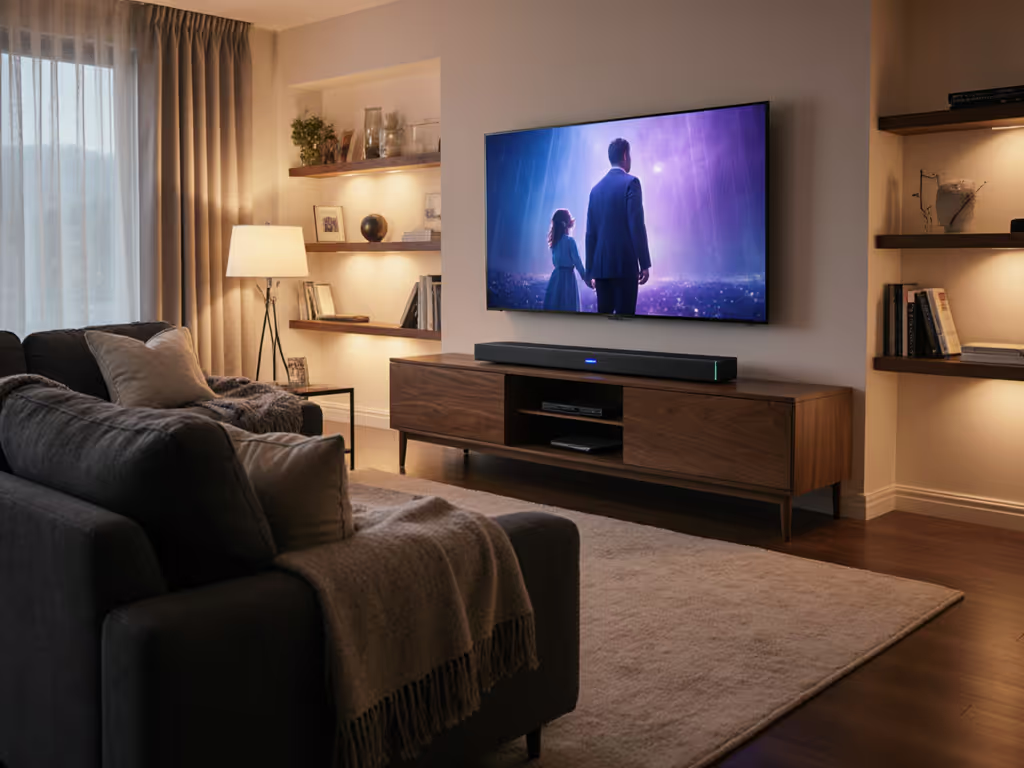
Best All-in-One Soundbar 2025: The Sweet Spot Choice
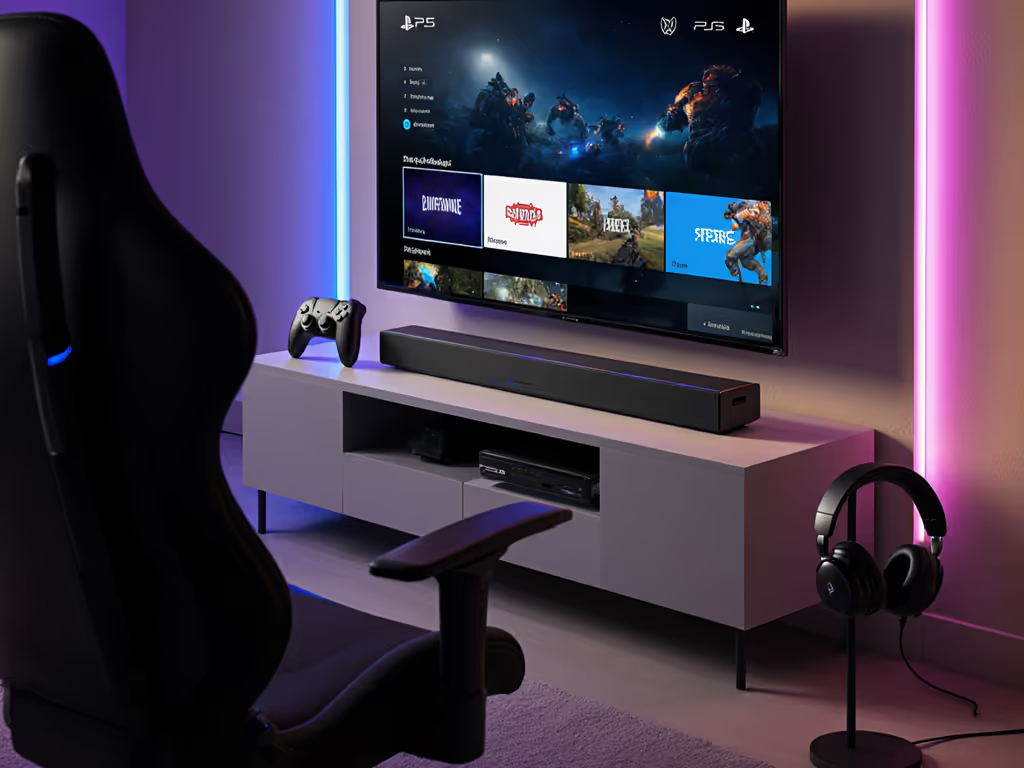
PS5 Xbox Soundbar Guide: Low-Latency Gaming Picks
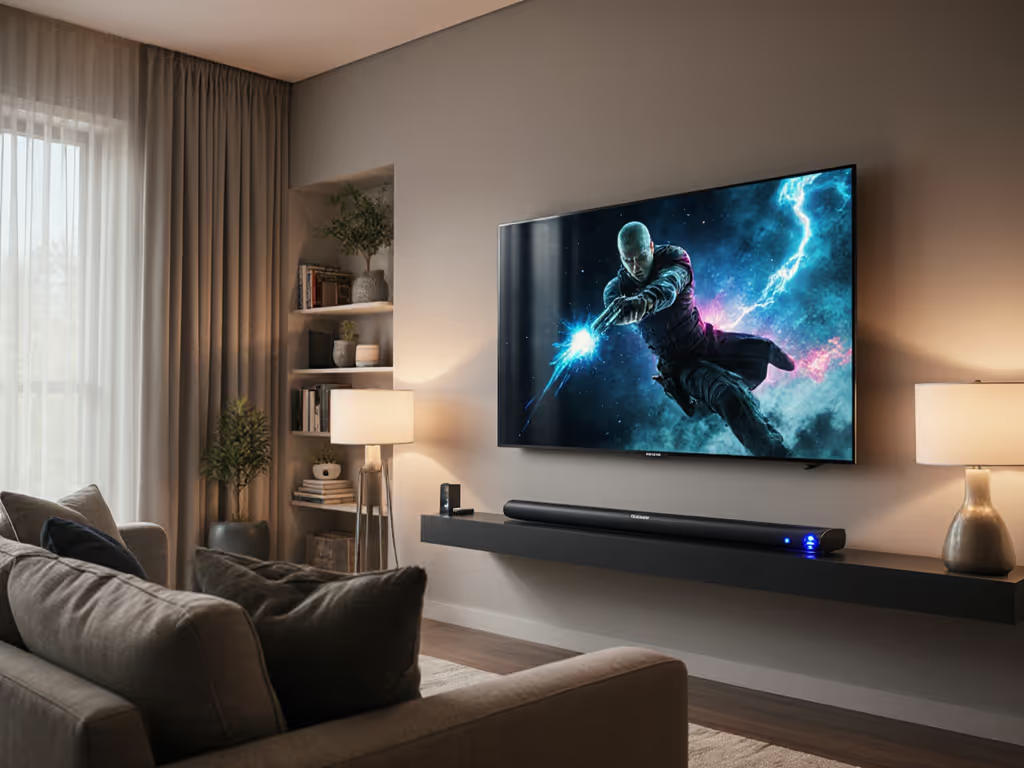
Flawless Samsung TV Soundbar Matches: Top Picks
